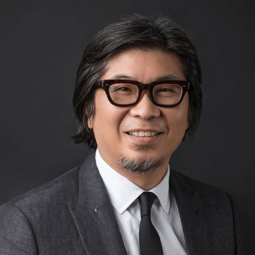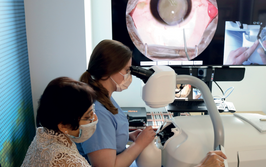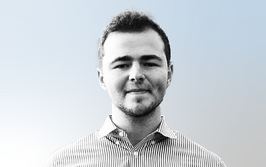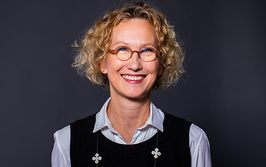Donald Tan
The Power List 2018

Donald Tan
Arthur Lim Professor at the SNEC and Duke-NUS Medical School; Partner and Senior Consultant Ophthalmic Surgeon at Eye & Retina Surgeons (ERS), Camden Medical Centre, Singapore
Donald has made some major contributions to ophthalmology, which include the development of new forms of selective lamellar keratoplasty such as DALK, DSAEK, and DMEK, including new surgical instrumentation and devices, keratoprosthesis surgery, and the development of low-dose atropine eyedrops as a pediatric myopia control therapy.
A recent Past President of the US-based Cornea Society, Donald is also the founding and current President of the Asia Cornea Society, which he formed in 2007, and the founding and current chair of the Association of Eye Banks of Asia (AEBA).
He has published over 350 peer-reviewed articles in the field of cornea, and is the recipient of over 20 international awards, which include the 2009 AAO/ISRS Casebeer Award, the 2012 EuCornea Medal, the 2013 Albrecht von Graefe Innovator’s Lecture, the CLAO 2014 Oliver H. Dabezies, Jr. Lecture, the CLAO 2015 Richard L. Lindstrom Lecture, the 2015 ASCRS Binkhorst Lecture, the 2017 APAO Jose Rizal Medal, the Netherlands Society of Ophthalmology 2017 Donders Lecture, and the 2018 Charles Tillett Lecture.
What have been your career highlights?
“My first career highlight was getting my first randomized clinical trial published on conjunctival autografting for pterygium, published in Archives of Ophthalmology in 1997 – it made the lead article for that issue, and gave me the confidence that I could actually get something published in a top international journal! Interestingly, after its publication two decades later, it’s still relevant – the conjunctival autograft is still the gold standard for pterygium surgery.
Another highlight would be developing the EndoGlide DSAEK donor insertion device in 2009 – it was the first disposable inserter at that time, and arguably the best-in-class in terms of endothelial cell preservation. Forming the Asia Cornea Society, in 2007, and having the opportunity to work closely with the top Asian corneal specialists in the field also continues to be a major highlight of my career.”
Who have been your mentors?
“I can name two. Firstly, Professor Arthur Lim, who was a giant in Asian ophthalmology, who put Singapore ophthalmology on the map. He founded the Singapore National Eye Centre, and the Singapore Eye Research Institute in the early 1990s. Under his mentorship, I developed my love of doing clinical research, and also learned the importance of medical ethics and the fact that patients always came first. My second mentor, although strictly speaking I never had the opportunity of being his mentee, was, and still is, Professor Shigeru Kinoshita, from Kyoto Prefectural University – I had been following his research for many years, since his seminal work on the ocular surface in the 80s with Dick Thoft and Judith Friend, when he was in the US. Through the decades, I have come to know him personally during my academic journey – his research advice and approach to solving clinical challenges in the corneal field, continues to inspire me. His latest publication in the New England Journal of Medicine, on corneal endothelial cell injection therapy, which could partially replace corneal transplant surgery, is a case in point. He continues to inspire and guide me in my work.”
What are your plans for the next 10 years?
“I’m currently still spending 50 percent of my time on academic research, and 50 percent on actual clinical work, and I’m hoping to continue this work-life balance, since the former leads to direct benefit for the latter. In research, I continue to try and develop new surgical approaches to performing the more difficult procedures such as DALK (Deep Anterior Lamellar Keratoplasty) and DMEK (Descemet’s Membrane Endothelial Keratoplasty), simply because these procedures have the lowest rejection rates, complication rates and the longest graft survival rates today, but I am also involving in discovering new pharmacological approaches to controlling myopia progression in children, not only focusing on low dose atropine eyedrops, which our previous ATOM trials have shown to be effective, but to also develop new formulations of atropine, and alternative drug targets. Finally, there are also a couple of early-stage projects to prevent angle closure glaucoma and corneal endothelial cell damage in corneal surgery, which can’t yet be revealed!”
What drives you day-to-day?
“My patients. I am first and foremost a clinician, and I suppose what drives me day-to-day is experiencing the clinical and surgical challenges as a corneal surgeon, and as a clinician. I always feel that there has to be a better way to treat and surgically manage our patients, to give them better, and longer-term vision. The optimist in me probably leads me to constantly think that one can improve on these results, by innovating and thinking outside the box.”
What has been your most successful collaboration?
“I’ve worked with many large ophthalmic companies over the years, but my most successful collaboration would probably be with Network Medical Products, a small company based in Yorkshire in the UK, which helped me develop the Tan EndoGlide – we are currently testing the third generation which may help to solve DMEK surgery and make the procedure more accessible to surgeons and more challenging surgical cases. My relationship with this innovative company has been successful because of our mutual drive and focus to push new boundaries in corneal transplantation, and its speed in commercialization and translating bench to bedside research.”













